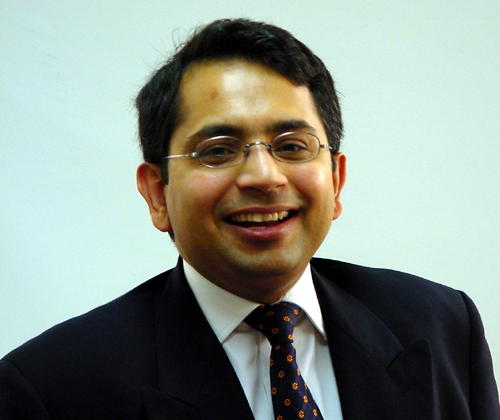Why's IBM Investing $3 Billion In Quantum Computing & Synth Brains? Trillion Dollar Humanoid Market
London, UK - 4th September 2015, 08:30 GMT
1. Silicon technology has taken humanity a long way forward from 1947 when the first transistor was invented by the Nobel prize winners Shockley, Bardeen & Brattain.
2. From smart mobile telephones we rely on to the sophisticated satellite navigation systems guiding our cars, a lot of techno-magic we see around us is a result of our ability to scale silicon-tech that turns hitherto science fiction into everyday reality at affordable prices.
3. All the Nobel laureates, scientists and engineers we liaise with at Quantum Innovation Labs http://QiLabs.net/ collectively realise the end of the silicon-scaling era is coming to end as the Moore's Law era for Silicon-based computers finally concludes.
 Trillion Dollar Humanoid Market
Trillion Dollar Humanoid Market
4. There will come a point in the medium-term future where microchips will no longer be made just out of silicon because other materials such as diamond, carbon nanotubes, graphene and neo-material hybrid chips will allow for faster and more complex computation.
5. Over the next five years, IBM is likely to invest a significant amount of their total revenue in technologies like non-silicon computer chips, quantum computing and computers that mimic the human brain, thereby staking Big Blue’s long-term survival on big data and cognitive computing.
6. IBM’s investment is one of the largest for quantum computing to date and the company is one of the biggest researchers in this nascent field.
7. The point of this latest visionary and bold three billion dollar announcement is to underscore IBM's commitment to the future of computing as much as it historically remains a pioneer in the computing field since its early days in the mid-1940s both during and immediately after the Second World War.
8. This $3 billion funding round will go towards a variety of projects designed to catapult semiconductor manufacturing past the "end of silicon scaling" in microchips, ie, the end of Moore's Law.
9. Most major semi-conductor and computing players see an end to silicon scaling within the next three to four tech generations.
10. Beyond that, Quantum Innovations Labs http://QiLabs.net/ sees a new way to make money from diamond, carbon nanotubes, graphene and neo-material hybrid chips via long-term returns from holding valuable, potentially lucrative patents and intellectual property in cognitive and quantum computing.
11. The new R&D initiatives embraced by semi-conductor chip manufacturing computing players such as IBM fall into two categories:
a. Developing nanotech components for silicon chips for big data and cloud systems; and
b. Experimentation with "post-silicon" microchips to include:
i. Research into quantum computers which converse in Q-bits as opposed to binary code;
ii. Neurosynaptic computers which mimic the behavior of living brains;
iii. Carbon nanotubes;
iv. Graphene tools; and
v. Variety of other neo-material hybrid technologies.
12. Even after the end of silicon scaling, performance scaling in computer systems to access the trillion dollar new market in artificial intelligence, machine learning & human-like robots is likely to continue in various ways. To this end the R&D efforts of IBM, Google, Microsoft, Amazon, NASA, CIA and NSA amongst other government and private players in Europe, Russia, Asia -- including China, Japan and India -- Australia and South Africa are focused on different ways and means by which this might be done.
[STOPS]
Source: QiLabs.net 1. Funding Form 2. Involvement Form 3. iQ:Ei Club
What are your thoughts, observations and views? We are keen to listen and to learn.
Best wishes

D K Matai
ATCA: The Asymmetric Threats
Contingency Alliance is a philanthropic expert initiative founded
in 2001 to resolve complex global challenges through collective
Socratic dialogue and joint executive action to build a wisdom
based global economy. Adhering to the doctrine of non-violence,
ATCA addresses asymmetric threats and social opportunities arising
from climate chaos and the environment; radical poverty and microfinance;
geo-politics and energy; organised crime & extremism; advanced
technologies -- bio, info, nano, robo & AI; demographic skews
and resource shortages; pandemics; financial systems and systemic
risk; as well as transhumanism and ethics. Present membership
of ATCA is by invitation only and has over 5,000 distinguished
members from over 120 countries: including 1,000 Parliamentarians;
1,500 Chairmen and CEOs of corporations; 1,000 Heads of NGOs;
750 Directors at Academic Centres of Excellence; 500 Inventors
and Original thinkers; as well as 250 Editors-in-Chief of major
media.
The Philanthropia, founded in 2005, brings together over
1,000 leading individual and private philanthropists, family offices,
foundations, private banks, non-governmental organisations and
specialist advisors to address complex global challenges such
as countering climate chaos, reducing radical poverty and developing
global leadership for the younger generation through the appliance
of science and technology, leveraging acumen and finance, as well
as encouraging collaboration with a strong commitment to ethics.
Philanthropia emphasises multi-faith spiritual values: introspection,
healthy living and ecology. Philanthropia Targets: Countering
climate chaos and carbon neutrality; Eliminating radical poverty
-- through micro-credit schemes, empowerment of women and more
responsible capitalism; Leadership for the Younger Generation;
and Corporate and social responsibility.

